Winter is one of my favorite times to photograph, but it comes with its own set of challenges. From unpredictable weather to limited colors in the landscape, winter photography requires creativity, planning, and the ability to work with natural light effectively. However, the payoff is worth it—winter photos can be magical, and unique, and stimulate that cozy feeling that keeps the serotonin flowing in the winter.
I’ll cover the pros and cons of winter photography, essential tips for working with lighting, and how to make the most of snowy conditions and not-so-snowy conditions. Try these winter photography tips to make winter one of your favorite times of year to shoot.
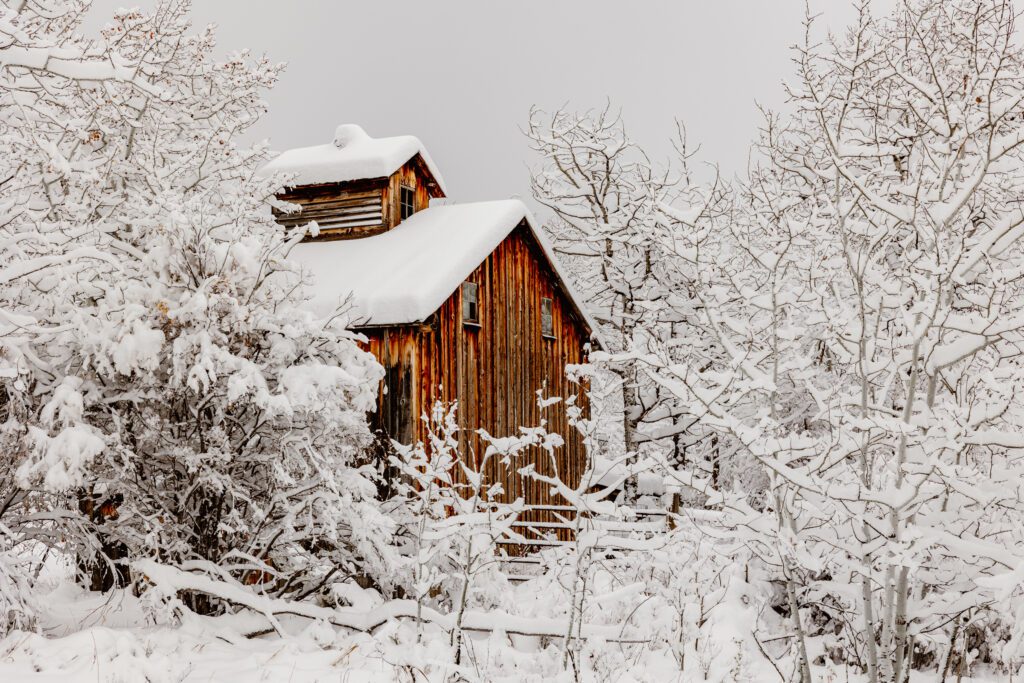
Why Winter Photography is Worth It
Pros of Shooting in the Winter
- Unique and Stand-Out Photos – Winter photography is less common, so your images will have a distinctive look that sets them apart.
- Natural Reflector – Snow acts as a giant natural reflector, bouncing soft, even light onto your subject’s face, which is ideal for portrait photography.
- Less Crowded Locations – Many outdoor locations that are typically busy in the summer and fall are quiet during the winter, giving you more creative freedom.
- Cozy Wardrobe Options – Winter clothing like sweaters, coats, and hats add warmth and texture to photos, enhancing the overall aesthetic.
- Gorgeous Winter Landscapes – Snow-covered trees, mountains, and frozen lakes create breathtaking backdrops for your images.
- Minimal Background Distractions – A thick layer of snow can simplify your composition by covering up clutter or distracting elements in the background.
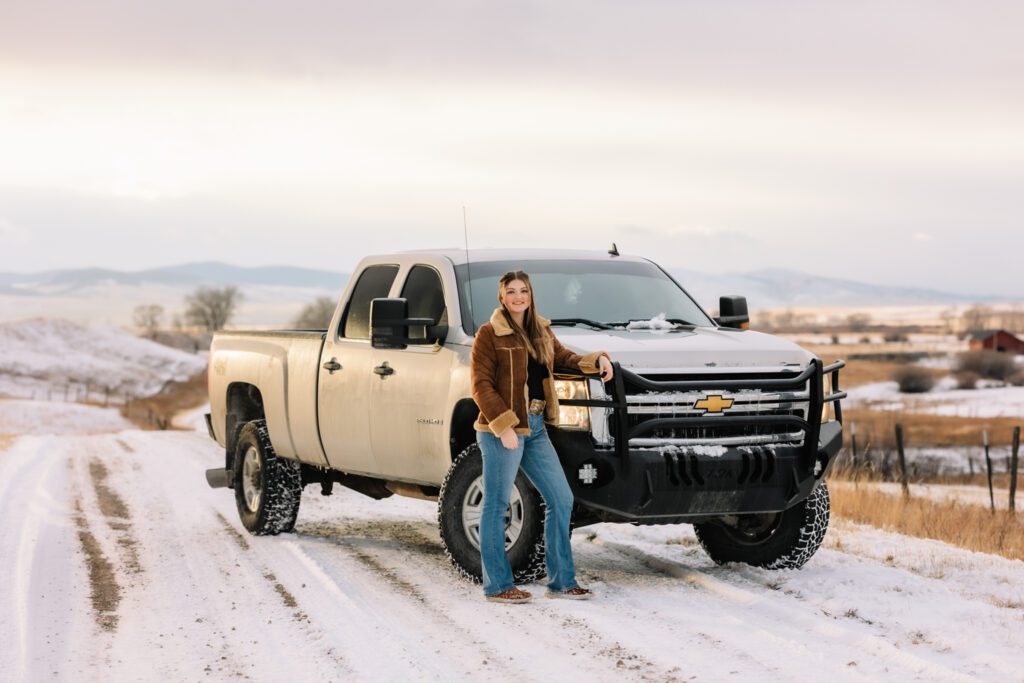
Challenges of Winter Photography
Cons of Shooting in the Winter
- Cold Temperatures – Extremely cold weather can limit shooting time, affect camera battery life, and make it uncomfortable for your subjects.
- Bulky Outfits – Layered clothing can sometimes make subjects appear stiff or bulky, so styling needs to be done carefully.
- Limited Background Options – With snow covering everything, you might end up with solid white or brown backgrounds that require creativity to make it visually interesting.
- Weather-Dependent – Snowfall, ice, fog, and extreme temperatures make scheduling shoots trickier compared to warmer seasons.
- Indoor Options May Be Necessary – If outdoor shooting isn’t possible, you might need to get creative with indoor locations that offer natural light.
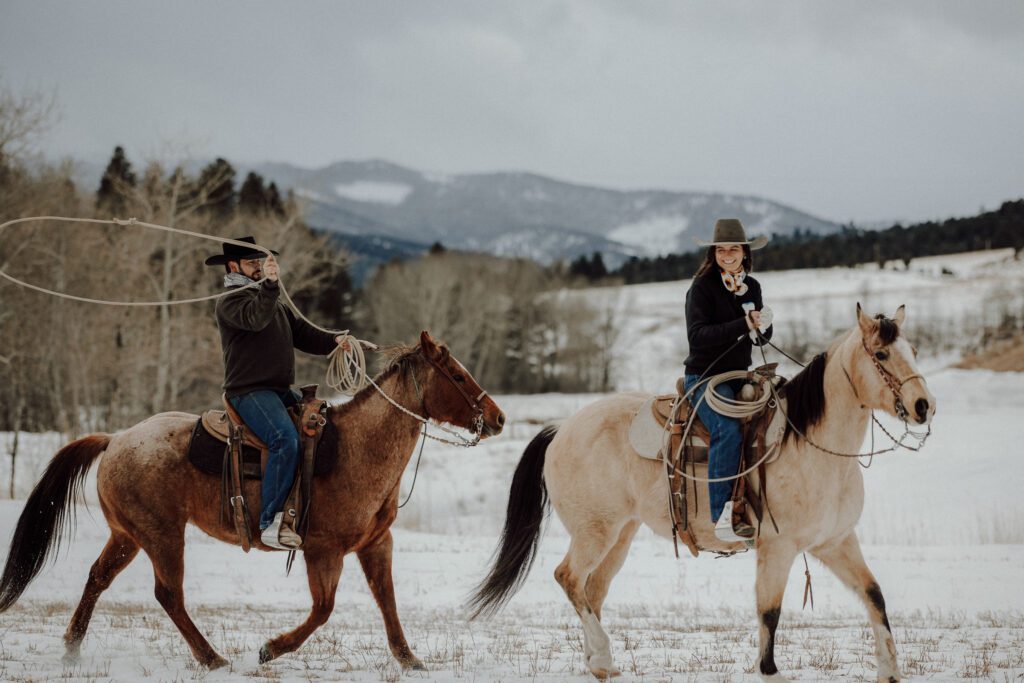
Tips for Capturing Beautiful Winter Photos
1. Work Around the Weather
Winter weather can change quickly, so check the forecast before planning a shoot. Ideal conditions for winter photography include fresh snowfall, fog rolling in, or golden-hour lighting when the sun is lower in the sky.
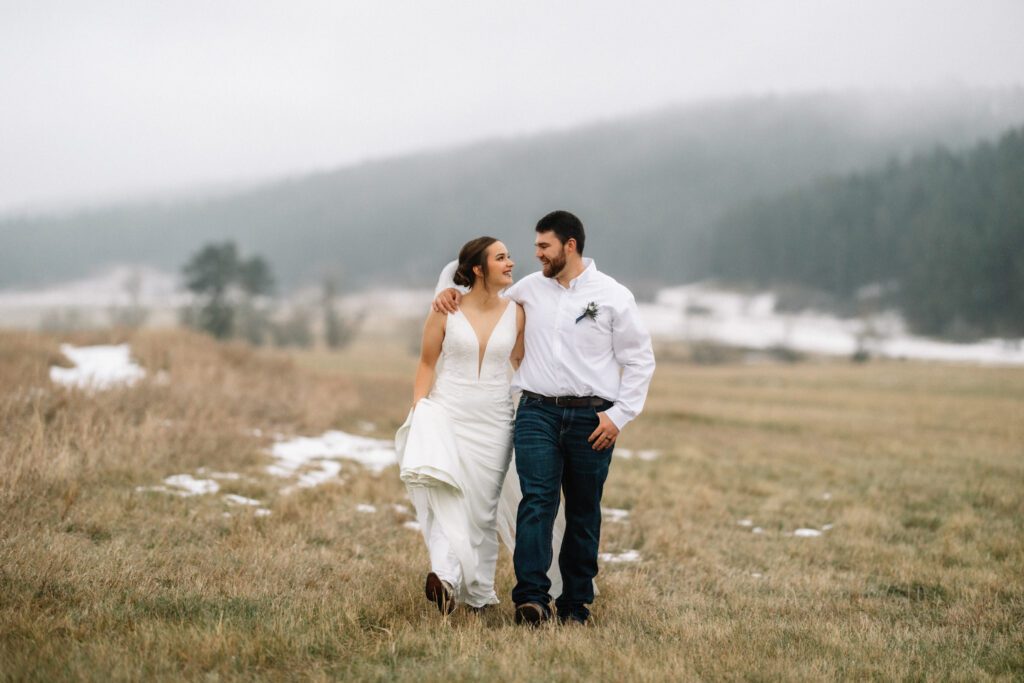
2. Choose the Right Lighting
- Early Morning & Late Afternoon – The best times to shoot in winter are during sunrise or sunset when the light is soft and golden. Bonus Tip!! Did you know golden hour lasts a lot longer in the winter because of how low the sun is in the sky!!
- Overcast Days – Cloudy skies diffuse light beautifully, eliminating harsh shadows and creating a moody aesthetic.
- Snowy Conditions – If snow is falling, use a fast shutter speed to freeze motion or a slow shutter speed for a dreamy effect.
3. Utilize Natural Reflectors
The bright, white snow acts as a reflector, bouncing light onto your subject’s face and reducing harsh shadows. This makes it easier to shoot in locations that might otherwise be too dark.

4. Find the Right Background
- Snow-Covered Pine Trees – Pine trees look magical with a fresh layer of snow and provide great contrast in the background.
- Mountains and Open Fields – These landscapes create depth and interest in your composition.
- Shooting Deciduous Trees – Bare branches can sometimes be distracting, so opt for evergreens if possible. If you come across a group of deciduous trees, one great way to keep the background from being distracting is to use a large aperture. Large aperture equals small number; 2.8 or smaller.
- Look for Unique Elements – Water, bridges, rustic barns, or winding paths can add visual interest to an otherwise minimalistic winter scene.

5. Dress Your Subjects for the Season
- Layer Wisely – Encourage your subjects to wear form-fitting base layers under coats to keep warm without adding too much bulk.
- Use Accessories – Hats, scarves, and gloves not only keep them warm but also add cozy, seasonal elements to the images.
- Pop of Color – Colored coats or accessories can make your subject stand out against a snowy white background. Depending on your aesthetic, you can decide what colors will look best. Jewel tones in the winter are my favorite!
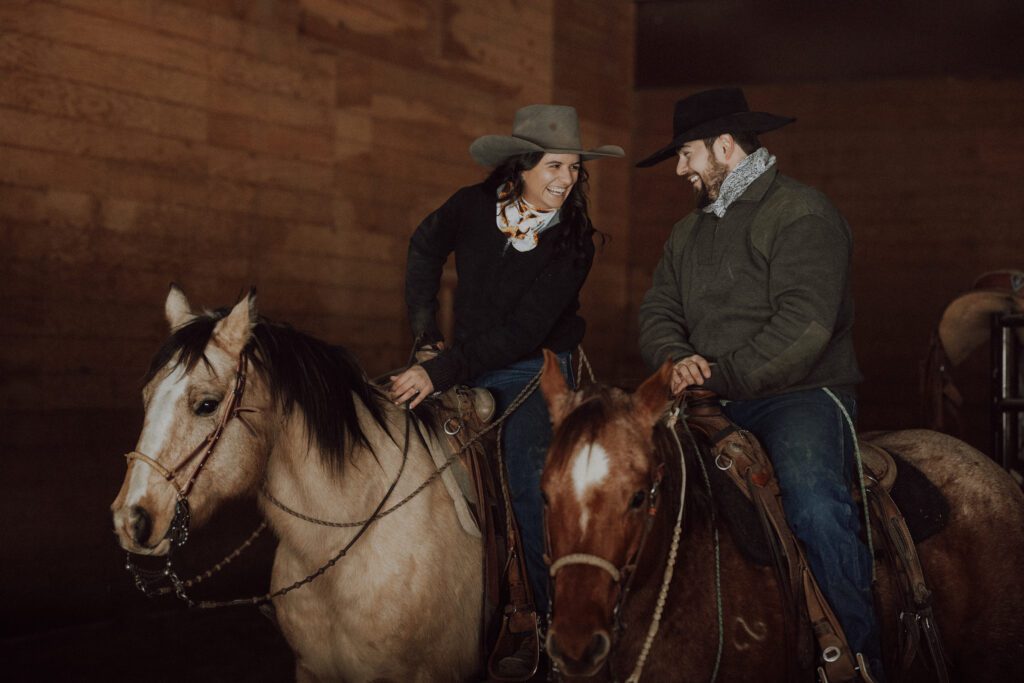
6. Be Creative with Indoor Locations
If outdoor conditions are too harsh, find indoor spaces with large windows for natural light. Barns, greenhouses, or homes with large windows can provide a warm, inviting atmosphere while still embracing the winter season.
Here’s how you can utilize winter as a great time for photography—whether there’s snow or not!
1. Embrace the Moody Winter Aesthetic
Even without snow, winter has a unique, soft, and sometimes dramatic look. Bare trees, frosty mornings, and overcast skies create a neutral and minimalistic background that makes your subject pop. Use the muted colors of the season to your advantage by incorporating earthy tones and cozy textures in your subject’s outfits.
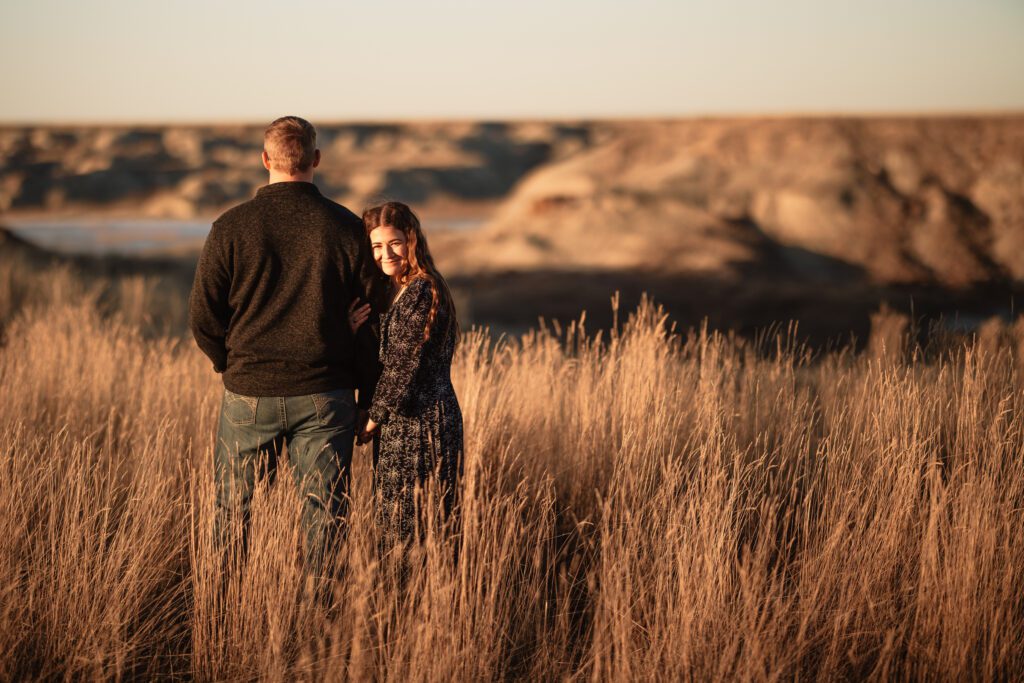
2. Use Golden Hour for Warmth
Winter light is softer and lower in the sky, making it easier to capture beautiful golden tones. Take advantage of:
- Sunrise & Sunset: Like I said earlier, the golden hour lasts longer in winter, giving you more time to work with flattering light.
- Backlighting: Position your subject in front of the sun to create a warm, glowing effect that contrasts with the cool winter tones.
- For more info on shooting in Golden Hour, check out my blog post!
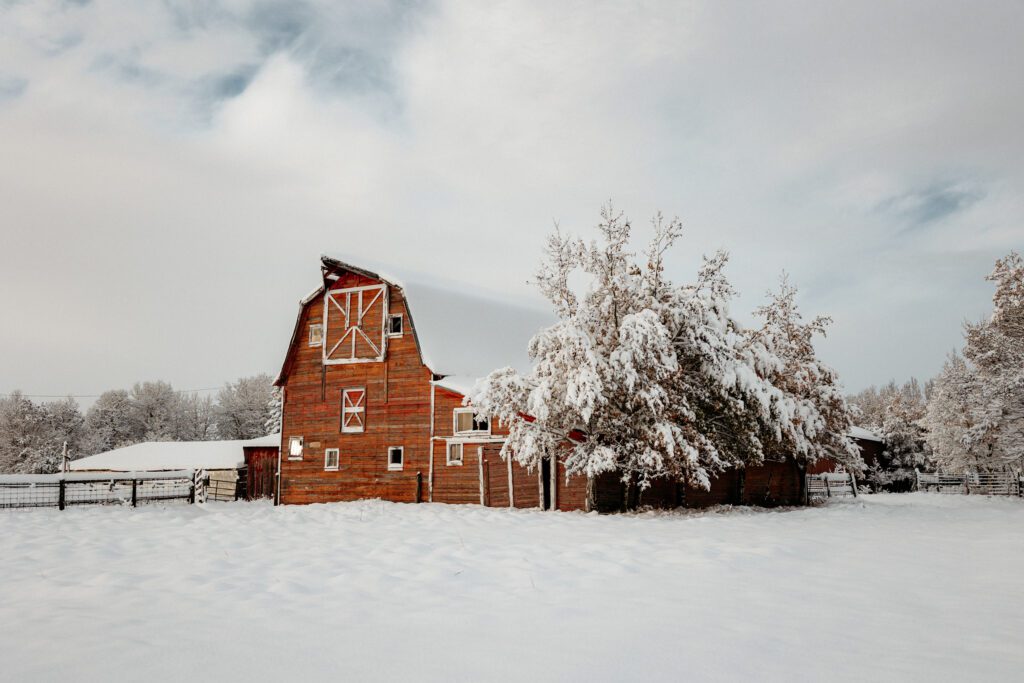
3. Make Use of Fog, Frost, and Ice
Even without snow, winter frost and fog can create dreamy, cinematic images. Look for:
- Frozen lakes or ponds that reflect light beautifully.
- Morning frost on fields, branches, or fences.
- Foggy days that add depth and mystery to your photos.
4. Choose Your Backgrounds Wisely
- Evergreens: Pine trees maintain their rich green color year-round and provide a beautiful contrast against winter’s muted tones.
- Mountains, barns, or rustic fences: These elements add character and structure to your images.
- Open fields or rolling hills: Even if they are brown, they provide a warm and earthy aesthetic that works beautifully for portraits.
5. Dress Your Subjects for the Season
Without snow, you can still achieve a cozy winter feel by having your subjects wear:
- Wool coats, scarves, and hats for texture.
- Layers in earthy tones, jewel tones, or warm neutrals to complement the winter landscape.
- Leather boots or knit sweaters for a rustic winter vibe.

6. Capture Motion & Playfulness
- Windy conditions? Use it to create movement in hair and clothing.
- Bring props like blankets or lanterns to add warmth and storytelling elements.
- Use reflections on icy puddles or frozen lakes for creative compositions.
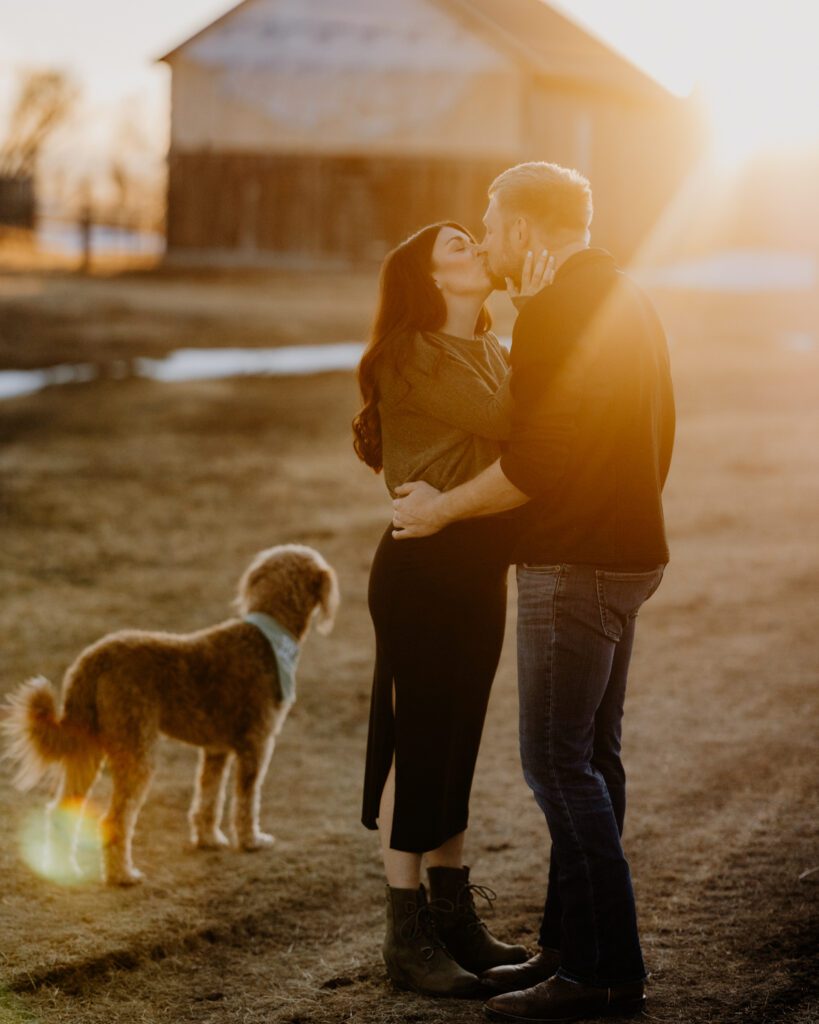
Final Thoughts
Whether you have a winter wonderland or just cold, snow-free days, you can still create stunning and unique winter photography. The key is to embrace the natural colors and lighting, find strong backgrounds, and use winter wardrobe elements to bring out the season’s charm. So bundle up, grab your camera, and embrace the beauty of the season!
For more helpful tips on taking better photos check out my post on Mastering Golden Hour.
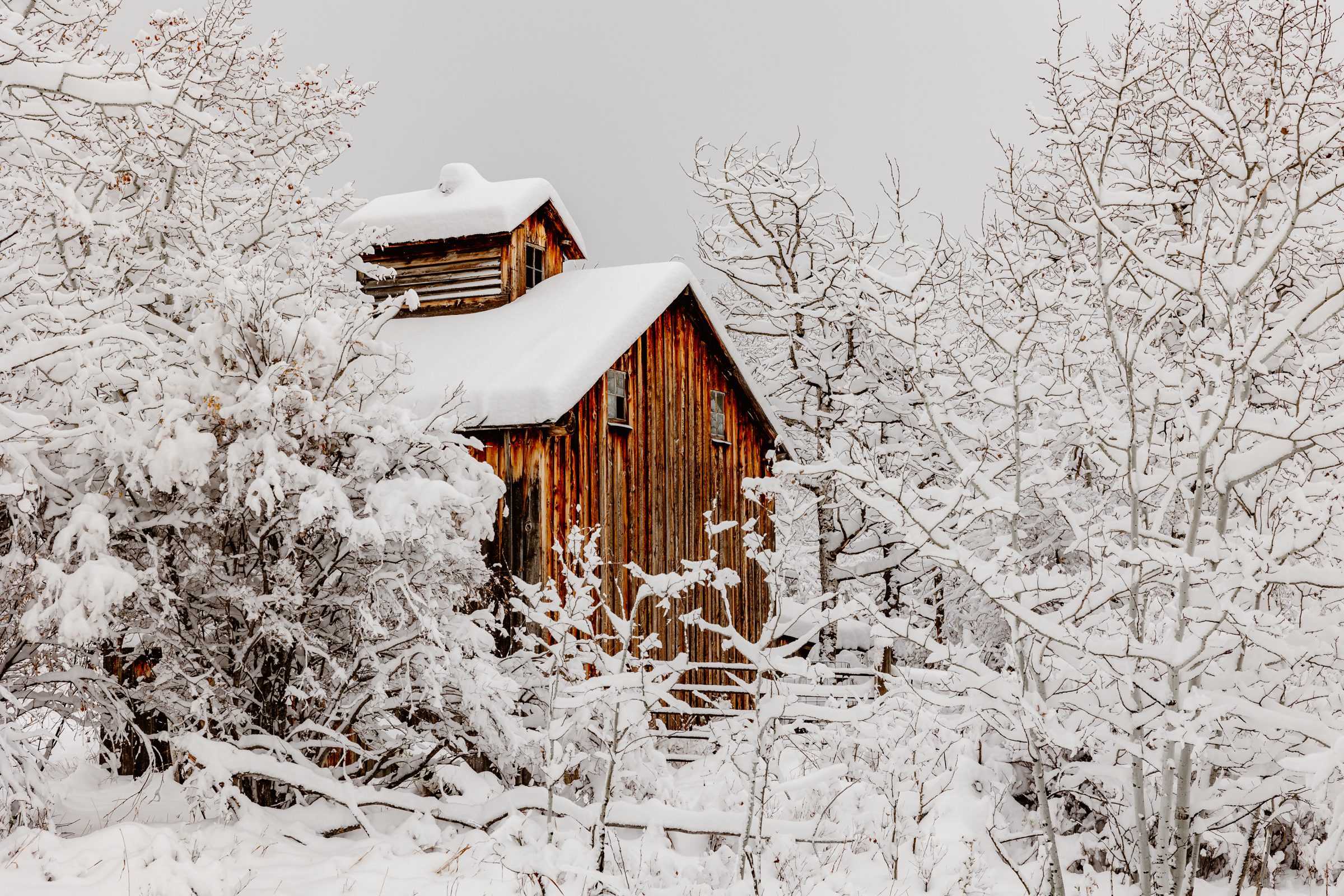
+ show Comments
- Hide Comments
add a comment